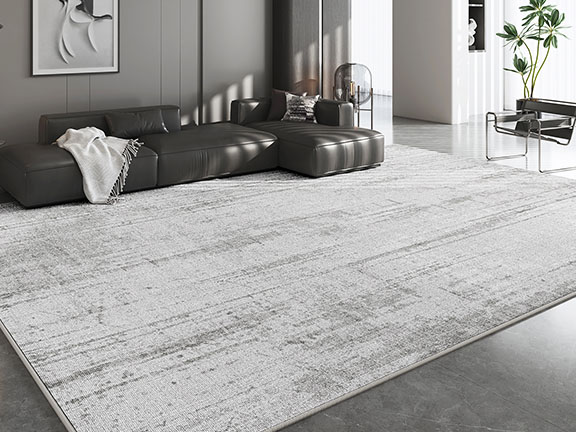When selecting carpet materials, it's essential to consider the usage scenario, budget, maintenance requirements, and personal preferences. Below is a comparative analysis of key factors and common materials to help you make an informed decision.
1. Selection Based on Usage Scenario
High-Traffic Areas (Living Room, Entryway)
Recommended Materials: Nylon (durable and stain-resistant), polypropylene (moisture-resistant and affordable), wool blends (comfortable and long-lasting).
Features: Prioritize high-density, low-pile, or loop-pile constructions for easy cleaning.
Bedroom/Children’s Room
Recommended Materials: Wool (soft and warm), acrylic (wool-like texture), natural jute (eco-friendly and breathable).
Features: Medium or high-pile for added comfort; avoid synthetic fibers that generate static.
Kitchen/Bathroom
Recommended Materials: Polypropylene (waterproof and mildew-resistant), rubber backing (anti-slip).
Features: Opt for small rugs or machine-washable styles for easy maintenance.
Commercial Spaces
Recommended Materials: Nylon (high durability), polyester (fade-resistant), sisal (stain-resistant).

2. Comparison of Common Carpet Materials
| Material | Pros | Cons | Best For |
|---|---|---|---|
| Wool | Soft, warm, flame-resistant | Expensive, prone to moths | Bedrooms, luxury living rooms |
| Nylon | Durable, stain-resistant, easy to clean | Static-prone, may develop indentations | Living rooms, hallways, offices |
| Polypropylene | Waterproof, mildew-resistant, budget-friendly | Prone to aging, not heat-resistant | Kitchens, bathrooms, outdoor use |
| Polyester | Fade-resistant, vibrant colors | Pilling, attracts oil stains | Low-traffic areas |
| Jute/Sisal | Eco-friendly, breathable, natural texture | Rough texture, not moisture-resistant | Living rooms, studies (barefoot-friendly) |
| Acrylic | Wool-like, UV-resistant | Collects dust, flammable | Children’s rooms, sunrooms |
3. Other Key Considerations
Budget
Economical: Polypropylene, polyester (¥50–200 per sqm).
Mid-Range: Nylon, blends (¥200–500 per sqm).
High-End: Pure wool, handwoven (¥500+ per sqm).
Maintenance Difficulty
Easy to Clean: Low-pile, synthetic fibers (vacuum + spot cleaning).
High Maintenance: High-pile wool (requires professional cleaning, moth protection).
Health & Eco-Friendliness
Low-VOC Certification: Avoid low-quality backing that emits formaldehyde.
Natural Materials: Wool, cotton, or jute for allergy sufferers.
Climate Adaptability
Humid Areas: Mildew-resistant polypropylene or rubber backing.
Dry Areas: Wool or anti-static treatments.
4. Shopping Tips
Touch Test: Feel the material’s softness and thickness.
Sample Testing: Request samples to check for fading and stain resistance.
Backing Inspection: Latex backing for slip resistance; tightly woven backing for durability.
Label Check: Look for CRI (Carpet and Rug Institute) certification.
Summary: Choose based on functional needs (e.g., durability for living rooms, comfort for bedrooms) while balancing budget and maintenance costs. Natural materials suit those prioritizing quality, while synthetic fibers offer practicality and durability. Always consider long-term usability before purchasing!

